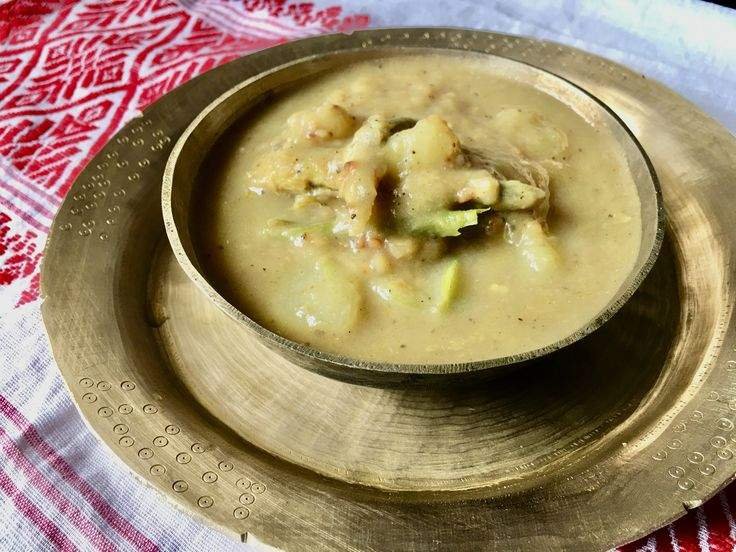Assam’s culinary heritage is more than just a palate of flavors—it’s a vibrant archive of history, identity, and oral storytelling passed through generations. In 2025, chefs, researchers, and home cooks across the region are joining hands to preserve this intangible cultural treasure. From bamboo-steamed delicacies to firewood-cooked fish curries, Assam’s food narrates the journey of its people, climate, and biodiversity.
The Culinary Soul of Assam
Traditional Assamese cuisine is characterized by minimal spices, indigenous herbs, and techniques designed to retain the natural essence of ingredients. This philosophy stems from a deep connection with the land. Rice is central to every meal, accompanied by lentils, leafy greens, and protein—often in the form of fish or fermented products. What makes Assamese food unique is not only its ingredients but the stories and rituals embedded in each recipe.
Khar: The Symbol of Assamese Identity
Khar is more than just a dish—it is a culinary identity marker for Assamese people. Made by filtering water through sun-dried banana ash and mixing it with raw papaya, pulses, or fish, Khar has both medicinal and cultural significance. Traditionally eaten as the first course of a meal, Khar cleanses the palate and promotes digestion. In 2025, chefs are now experimenting with Khar-based fusion recipes, introducing it to gourmet audiences without losing its authenticity.

Masor Tenga: Sour Fish Curry With a Story
Masor Tenga, the light and tangy fish curry, is a staple during summer. Using tomatoes, elephant apple (ou tenga), or lemon, the dish is known for its cooling properties. But what makes Masor Tenga truly special is its versatility across households. Each family recipe carries tweaks—from village to village—offering glimpses into micro-histories of taste. Older generations narrate how this dish was a monsoon must-have, especially when fish was fresh from the overflowing rivers.
Pitha: Sweet Bites of Festival and Memory
Pitha, the traditional rice cake, is woven into the cultural fabric of Assamese festivities like Bihu. Varieties such as Til Pitha, Narikol Pitha, and Ghila Pitha are handcrafted using soaked rice flour and local fillings like sesame or coconut. In 2025, food historians are documenting these recipes from elderly women who preserve them through memory alone. Workshops and recipe books have begun capturing these culinary practices before they vanish with modernization.

Ingredients That Define a Region
What gives Assamese food its distinct identity are the indigenous ingredients—bamboo shoots, tengamora (roselle leaves), black rice, fish from the Brahmaputra, and wild herbs like manimuni and dhekia. These ingredients are hyper-local and seasonal, meaning they connect the kitchen directly to the rhythms of nature. Today, with rising global interest in sustainable eating, Assamese cuisine is gaining attention for its low-carbon, farm-to-table approach.
Cooking as a Community Ritual
Cooking in Assam has traditionally been a collective act—especially during festivals, weddings, or agricultural events. Meals were cooked in earthen or iron pots over wood fires, and stories flowed as freely as the food. Community elders often guided young girls and boys in techniques like grinding, fermenting, and leaf-wrapping. These moments of shared labor were also moments of cultural transmission. In 2025, community kitchens and culinary museums are helping retain this social essence.
Oral Tradition and Culinary Documentation
Assamese food history has largely survived through oral transmission. Unlike some regional cuisines with written cookbooks, most Assamese recipes exist in the minds of grandmothers and the hands of home cooks. Recognizing the urgency of preservation, 2025 has seen a rise in projects to document these recipes—through video interviews, recipe archives, and even digital storytelling platforms. These efforts ensure that future generations inherit more than just flavor—they inherit culture.
Reviving Lost Recipes in 2025
With modernization and urban migration, several traditional dishes had fallen out of everyday practice. However, the new generation of chefs and food enthusiasts in 2025 is actively reviving forgotten dishes like Poita Bhaat (fermented rice), Hukoti (fermented fish chutney), and Boror Tenga (sour lentil dumplings). Culinary researchers are working with rural elders to rediscover these recipes and adapt them for modern kitchens without compromising authenticity.

Culinary Tourism and Cultural Pride
Culinary tourism in Assam is booming in 2025, with travelers increasingly seeking immersive food experiences. From learning to make bamboo shoot pickle in Majuli to attending traditional cooking classes in Sivasagar, visitors are engaging with Assamese food as a window into culture. Restaurants and homestays are proudly showcasing local menus, while street food vendors preserve indigenous recipes. This food revival is also boosting rural economies and reigniting pride among younger generations.
The culinary heritage of Assam is not merely a collection of dishes—it is a living, breathing expression of identity, geography, and community. In 2025, as age-old recipes are documented, revived, and celebrated, Assamese cuisine is finally getting the recognition it has long deserved. Preserving these flavors is about preserving stories, memories, and the very soul of a region that speaks through its food.
Also Read: Hoolock Gibbons: India’s Only Apes Fight for Survival in Assam’s Hoollongapar Sanctuary












